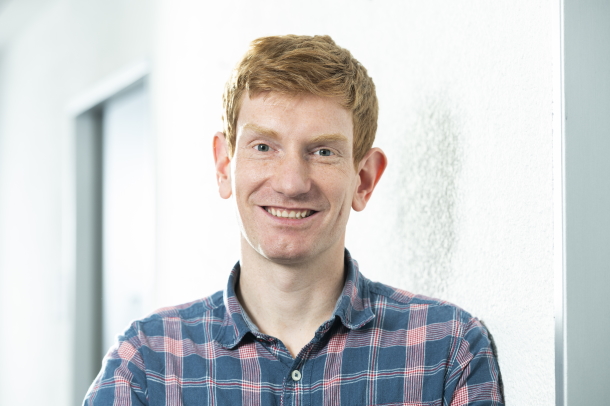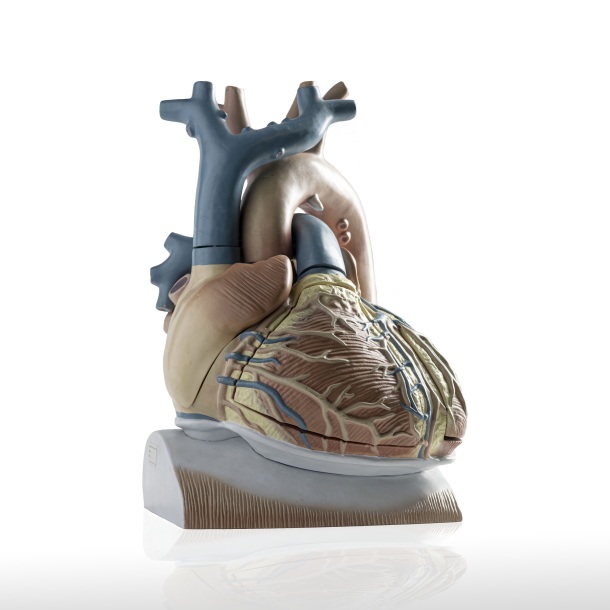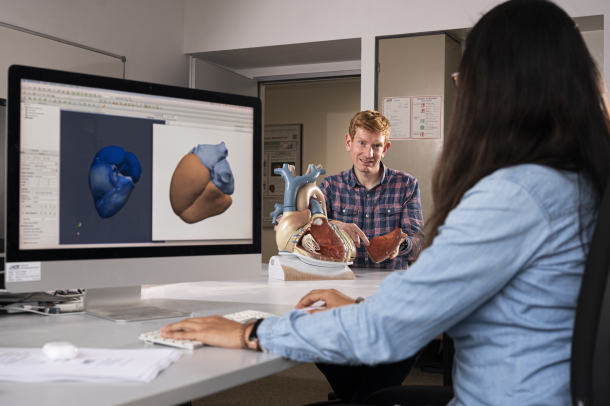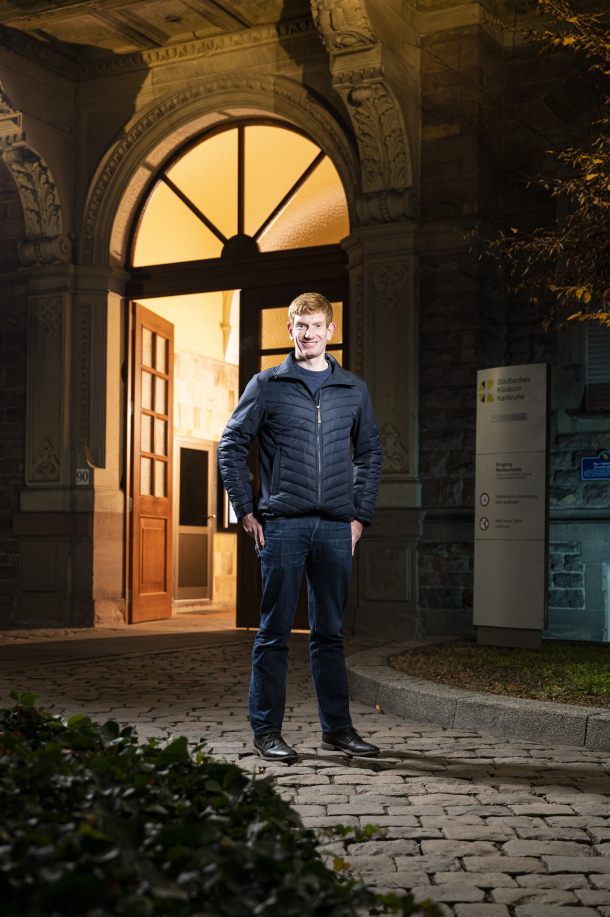The KIT Institute of Biomedical Engineering is using mathematical equations to develop a computer-based heart model for the targeted treatment of cardiac arrhythmias, thus improving medical research and the development of new diagnostic and therapeutic procedures.
In Germany, about 1.8 million people suffer from atrial fibrillation – the most common type of cardiac arrhythmia. Although atrial fibrillation is not immediately life-threatening, it is associated with an increased risk of stroke. Today, it is treated with medication or catheter ablation, where a catheter is inserted into the heart and the tissue causing the disease is heated to scar it and render it non-functional. Ablation helps about three quarters of all patients to recover, but is unsuccessful for the rest.
"Medical research has come a long way in many respects. However, it is still a challenge to transfer basic findings to patients," explains Ph. D. Axel Loewe, head of the heart modeling research group at the Institute of Biomedical Engineering. The goal of his research group is to use mathematical formulas to realistically model the human heart on the computer in order to study physiological and pathological mechanisms and to treat cardiac arrhythmias in an even more targeted manner.
Promising cell and animal experiments often form the basis for the development of new forms of therapy. However, these experiments reach their limits when transferred from animals to humans. One reason is that while the basic, disease-causing mechanisms are the same, individual factors differ significantly. "We believe that computer models can address and often resolve these limitations because they can be created for both, animals and humans. For example, basic experimental research that has taken place in animals can first be replicated for the animal in the computer model and then transferred to humans," Ph. D. Loewe says. With the help of computer simulation, effects can be tested in advance and transferability to actual behavior in humans can be forecasted better. For example, the simulation gives the physician a concrete suggestion of where ablation will be most effective.
"Computer models can be a valuable additional column in the portfolio of cardiac arrhythmia research tools. They can add long-term value and positively influence patient care – not only in individual patient models, but fundamentally."
The focus of computer modeling is on electrophysiology and the mechanics of the heart, which are coupled and represented with the aid of multiscale models. Electrophysiology describes all processes in the heart that are electrical in nature and related to cardiac rhythm. Mechanics describes the deformation of the heart during each heartbeat. Multiscale models encompass multiple biological levels: from ion channels, to cells, to tissues and organs. Taking into account the fundamental laws of nature, the levels are built up step by step, resulting in a model of the heart. Additional information is fed into each of these levels from outside to provide values for the free parameters in the equations. Such information can be, for example, the shape of the heart from a magnetic resonance imaging (MRI).
"The first milestone of cardiac modeling is the reproduction of a healthy heart. We have basically achieved that for many areas for several years now. The next step is to reproduce a model that will be disease-specific," says Ph. D. Loewe, describing the current state of his research. The team is also working on a spatially significantly increased resolution of the heart model in order to map each cell individually in the future and to illuminate the disease process of cardiac arrhythmias even more precisely. Model development is carried out in close exchange between researchers from KIT and physicians from Karlsruhe Municipal Hospital, Heidelberg University Hospital and Bad Krozingen University Heart Center. "The computer models help us to better understand and classify clinical observations and to be able to transfer the knowledge gained to other patients," says Ph. D. Amir Jadidi, senior physician for rhythmology at the Bad Krozingen University Heart Center.
Even if the model is not yet used for routine applications and individual patient therapy, many of the insights gained with it are already being used in clinical practice, for example in the field of drug research to generate more simple metamodels and thus evaluate new active substances. Furthermore, researchers can use the computer model to generate hypotheses that can be used to plan experimental work. "A positive effect is that computer models can help to conduct experiments in a more targeted way, and thus also reduce the number of animal experiments," Ph. D. Loewe says.
Ph. D. Jadidi concretizes the added value for his work, "When it comes to systematically evaluating new algorithms for analyzing our clinical signals, the ability to use computer models to synthetically generate virtually any number of signals for which the origin is known is extremely valuable. This capability will continue to grow in importance as machine learning becomes more widespread."
The goal of the research is to bring simulation into daily use as quickly as possible, thereby improving the diagnosis and treatment of heart disease. "I could imagine that in ten years there will be a new job description: What radiology assistants are in the MRI field today, simulation assistants might be in ten years for cardiac models," says Ph. D. Loewe, describing the future potential of the research.
openCARP – The software for cardiac simulation
As part of a project funded by the German Research Foundation, KIT together with the universities of Freiburg, Graz and Bordeaux published the "openCARP" software package in March 2020 (www.openCARP.org). This is intended to make the simulation program accessible to the knowledge community as a research tool. Until now, there were many prototypes existing next to each other, all of them having various weaknesses. openCARP minimizes these weaknesses and represents a suitable solution for large parts of the community, initially for the field of electrophysiology. With training material, videos and documentation possibilities, it also offers the potential to achieve synergy effects.



